- Tesla pushes for India EV import tax policy change-sources
- Proposes duty tax cut for EV makers who commit to invest-sources
- India considering plan, wary of impact on local players
- Tesla has expressed interest in India plant, cheaper EV
World
Exclusive: With Tesla push, India mulls import tax cut if EV makers build locally
/cloudfront-us-east-2.images.arcpublishing.com/reuters/2N7KAVGLNVMKRJZM3XWGNVCCZU.jpg)
India’s Prime Minister Narendra Modi shakes hands with Tesla chief executive Elon Musk during a meeting in New York City, New York, U.S., June 20, 2023. India’s Press Information Bureau/Handout via REUTERS/File Photo Acquire Licensing Rights
NEW DELHI, Aug 25 (Reuters) – India is working on a new electric vehicle policy that would slash import taxes for automakers that commit to some local manufacturing, following a proposal by Tesla (TSLA.O) which is considering entering the domestic market, people with direct knowledge said.
The policy being considered could allow automakers to import fully-built EVs into India at a reduced tax as low as 15%, compared to the current 100% that applies to cars which cost above $40,000 and 70% for the rest, said two of the sources, including a senior Indian government official.
Tesla’s best-selling Model Y, for example, starts at $47,740 in the U.S. before tax credits.
“There is an understanding with Tesla’s proposal and government is showing interest,” said the official, who is familiar with the issue.
India’s commerce and finance ministries, and Tesla, did not respond to requests for comment.
If such a policy is adopted, it could amount to a drastic reduction in the cost of imported EVs that local carmakers have been keen to avoid. It could also open the door for global automakers, beyond Tesla, to tap the world’s third-largest car market where sales of EVs are less than 2% of total car sales, but growing rapidly.
The lower import taxes could help Tesla sell its full range of models in India, and not just the new car it wants to make locally, said a third source.
Shares of Tata Motors (TAMO.NS), India’s largest electric car manufacturer, fell nearly 3% on the Reuters report, while rival Mahindra and Mahindra (MAHM.NS) dropped over 2%, dragging the benchmark auto index to an intra-day low with losses of 1.1%.
New Delhi is going to move slowly in considering the policy proposal as any lowering of taxes on imported EVs could disrupt the market and upset local players like Tata and Mahindra that are investing to build electric cars at home, the Indian official said.
“This is going to go through a lot of deliberations even though government is keen on getting Tesla. That’s because of the impact on domestic players,” said the official.
The policy is still in the initial stages of deliberation and the final tax rate could change, two of the sources said.
TESLA’S NEW EV
Other countries have taken similar measures to spur EV manufacturing commitments. Indonesia, for example, has offered to reduce import duties from 50% to zero for EV makers planning investments, a move seen aimed at attracting Chinese players and Tesla.
Tesla first tried to enter India in 2021 by pushing officials to lower the 100% import tax for EVs. Last year, the talks between Tesla and the Indian government collapsed when officials conveyed the company would have to first commit to local manufacturing.
More recently, Tesla has told Indian officials it is keen to set up a local factory and make a new EV priced around $24,000, roughly 25% cheaper than its current entry model, for both the Indian market and export.
Tesla’s senior public policy and business development executive Rohan Patel has in recent weeks met top officials privately. Prime Minister Narendra Modi, who held talks with CEO Elon Musk in June, has been tracking progress closely, Reuters has reported.
Indian officials conveyed there will be no special incentives for Tesla’s market entry, and the proposal for a low import tax, conditional on a manufacturing commitment, was touted by Tesla to keep both sides happy, the sources said.
One of the sources said Tesla told Indian officials a potential India factory could operate at full capacity by 2030.
Outside the United States, Tesla currently has a plant in Shanghai – its largest factory worldwide – and one outside Berlin. It is building a new plant in Mexico that will focus on a new mass-market EV platform Musk has said will slash costs for consumers.
Reporting by Aditi Shah, Aditya Kalra and Nikunj Ohri; Additional reporting by Shivangi Acharya; Editing by Kevin Krolicki and Raju Gopalakrishnan
Our Standards: The Thomson Reuters Trust Principles.

Continue Reading
World
Far-right activist and others hurt in stabbing in Mannheim, Germany
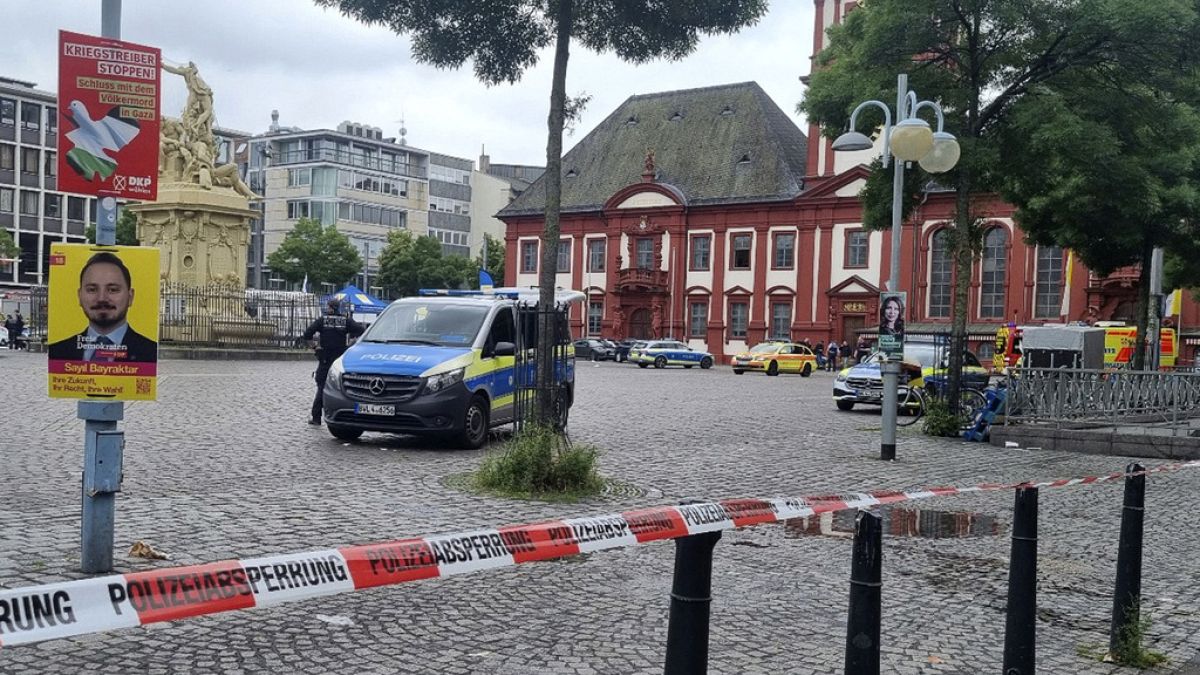
Police say several people, including one far-right anti-Islam activist, have been hurt in a stabbing in the German city of Mannheim.
An assailant with a knife attacked and wounded several people in a square in the southwestern German city of Mannheim on Friday, police said. Police shot at the attacker, who also was hurt.
Police said the incident happened shortly after 11:30am. They said that they couldn’t immediately give any information on the severity of the injuries.
Euronews understands that German far-right activist and anti-Islam critic Michael Stürzenberger was injured in the attack.
Our journalists are working on this story and will bring you more as it develops.
World
Modi touts India's roaring economy as he seeks reelection, but many feel left behind
SAMASTIPUR, India (AP) — Narendra Modi swept to power a decade ago on promises to transform India’s economy, and it would be hard to argue he hasn’t made strides. As he seeks a third term as prime minister, the country’s economic growth is the envy of the world, its stock markets are booming, and new buildings and highways are popping up everywhere.
There are cracks in the facade, though, that his political challengers hope to benefit from, including high unemployment, persistent poverty and the sense that only a small portion of India’s 1.4 billion people has been able to cash in on the good fortune.
“You have a booming economy for people higher up on the socioeconomic ladder, but people lower down are really struggling,” said Milan Vaishnav, director of the South Asia Program at the Carnegie Endowment for International Peace.
Modi and his Bharatiya Janata Party have remained popular since he was first elected prime minister in 2014 on a strident Hindu-first platform and pledges to succeed where past governments had failed by finally transforming the economy from rural to industrial.
He promised to clamp down on deeply rooted corruption and to leverage the country’s manpower advantage to turn it into a manufacturing powerhouse. While campaigning this spring — the six-week-long election concludes Saturday — Modi has vowed to make India’s economy the world’s third-largest, trailing only those of the U.S. and China. Votes will be counted Tuesday.
Modi has had successes. The economy is growing by 7% and more than 500 million Indians have opened bank accounts during his tenure — a big step toward formalizing an economy where many jobs are still off the books and untaxed. His administration has also poured billions of dollars into the country’s creaky infrastructure to lure investment, and notably streamlined its vast welfare program, which serves around 60% of the population and which his party is leveraging to try to win over poor and disillusioned voters.
Despite these advances, though, Modi’s economic policies have failed to generate employment that moves people from low-paying, precarious work to secure, salaried jobs. With inequality, joblessness and underemployment soaring, they’ve become central themes of the election.
Even as India’s millionaires multiply, nearly 90% of its working-age population earns less than the country’s average annual income of around $2,770, according to a World Inequality Lab study. The top 1% own more than 40% of the country’s wealth, while the bottom 50% own just above 6%, the study found.
To stem economic discontent, Modi and the BJP are hoping to win over poor and disgruntled voters with more than $400 billion in welfare subsidies and cash transfers.
At the heart of their welfare agenda is a free ration program, which serves 800 million people. It existed under the previous government and is a right under India’s National Food Security Act. But it was greatly expanded during the pandemic to provide grain for free, instead of just cheap, and then extended for another five years beginning in January.
Through roughly 300 programs, hundreds of millions have received household goods ranging from cooking gas cylinders to free toilets. Millions of homes have been built for the poor, who now have greater access to piped water, Wi-Fi and electricity. And the government has ramped up cash transfers to farmers and other key voting blocs.
When Rajesh Prajapati lost his job at a chemical factory in Prayagraj, a city in India’s largest state, Uttar Pradesh, his family of five survived on government grain.
“For almost a year, the free ration was our only solace,” he said, adding that it was the reason they voted for Modi again.
Indian parties have always used welfare to win elections. But experts say the BJP has done it better.
Benefits such as subsidies, pensions and loans are now delivered through cash transfers directly to bank accounts linked to each individual’s biometric identity card, which the government says has helped eliminate leakages and corruption by cutting out intermediaries.
These large-scale handouts provide relief, but some say they are only a temporary fix and a sign of rising economic distress. To reduce inequality, they should be accompanied by investment in health and education, which have stagnated in recent years, said Ashoka Mody, an economist at Princeton University.
Subsidies are helpful, “but they do not create the ability of people to put themselves on a trajectory where they and their children can look forward to a better future,” he said.
Tuntun Sada, a farmworker from Samastipur, a city in the eastern state of Bihar, said the 18 kilograms (40 pounds) of free grain that helps feed his family of six each month has only marginally improved their lives. He still earns less than $100 a month after working the fields of wealthier landowners.
“People like us don’t get very much,” Sada said. “Modi should walk the talk. If we don’t earn enough, how will we raise our children?”
The free rations don’t last through the month, piped water has yet to reach his community and there are no nearby schools for his four kids to attend. What he really needs, he said, is a better job.
Modi’s opposition, led by the Congress party, are betting on the jobs crisis to dent the BJP’s chances of securing a majority. Before the election, a survey by the Center for Study of Developing Societies found that more than 60% of voters were worried about unemployment and believed finding a job had become tougher. Only 12% felt like economic opportunities had increased.
Official government data, which many economists question, shows the unemployment rate declining. But a recent report from the International Labor Organization found that youth unemployment in India is higher than the global average, that more than 40% of Indians still work in agriculture, and that 90% of workers are in informal employment.
The liberalizing of India’s economy in the 1990s laid the foundation for the remarkable growth since, with millions escaping poverty and spawning a middle class. But it has also allowed for the growing disparity between rich and poor, economists say.
Rahul Gandhi, the main face of the opposition, has sought to tap into the growing resentment felt by the country’s many have-nots by promising to take on the issue of wealth distribution if his alliance gains power.
Modi, who says his government has lifted 250 million Indians out of poverty, is unapologetic. In a TV interview this month, he said wealth distribution is a gradual process and dismissed criticism of the growing inequality by asking, “Should everyone be poor?”
Both the BJP and the Congress party say they will create more employment through various sectors including construction, manufacturing and government jobs. Experts say this is crucial for reducing economic disparities, but it’s also hard to do.
Mass unemployment and underemployment have always been intractable problems in India, so parties inevitably fall back on the promises of handouts, said Mody, the Princeton economist. Case in point: The Congress party has pledged to double people’s free rations if voted into power.
“It’s completely the wrong focus… what we need is job creation,” Mody said. “And there is no one today who has an idea of how to solve that problem.”
___
Pathi reported from New Delhi.
___
Follow AP’s Asia-Pacific coverage at https://apnews.com/hub/asia-pacific
World
Lava continues flowing from Iceland volcano after eruption
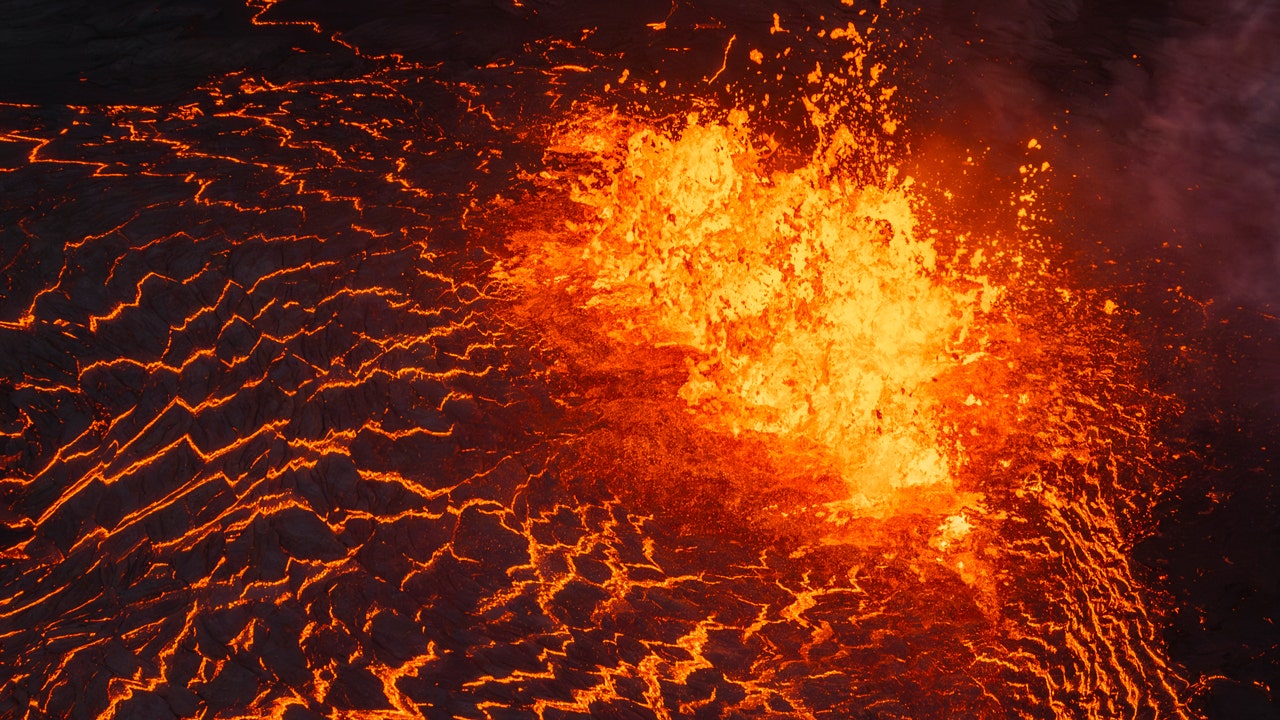
Lava continued to spurt from a volcano in southwestern Iceland on Thursday but the activity had calmed significantly from when it erupted a day earlier.
The eruption Wednesday was the fifth and most powerful since the volcanic system near Grindavik reawakened in December after 800 years, gushing record levels of lava as its fissure grew to 2.1 miles in length.
Volcanologist Dave McGarvie calculated that the amount of lava initially flowing from the crater could have buried Wembley Stadium in London, which seats 90,000 people, under 49 feet of lava every minute.
LATEST ICELAND VOLCANIC ERUPTION SUBSIDES, BUT EXPERTS WARY OF MORE SOON TO COME
“These jets of magma are reaching like 50 meters (165 feet), into the atmosphere,” said McGarvie, an honorary researcher at Lancaster University. “That just immediately strikes me as a powerful eruption. And that was my first impression … .Then some numbers came out, estimating how much was coming out per minute or per second and it was, ‘wow.’”
The activity once again threatened Grindavik, a coastal town of 3,800 people, and led to the evacuation of the popular Blue Lagoon geothermal spa, one of Iceland’s biggest tourist attractions.
Lava flows from a volcano in Grindavik, Iceland, Wednesday, May 29, 2024. A volcano in southwestern Iceland erupted Wednesday for the fifth time since December, spewing red lava that once again threatened the coastal town of Grindavik and led to the evacuation of the popular Blue Lagoon geothermal spa. (AP Photo/Marco di Marco)
Grindavik, which is about 30 miles southwest of Iceland’s capital, Reykjavík, has been threatened since a swarm of earthquakes in November forced an evacuation in advance of the initial Dec. 18 eruption. A subsequent eruption consumed several buildings.
Protective barriers outside Grindavik deflected the lava Wednesday but the evacuated town remained without electricity and two of the three roads into town were inundated with lava.
“I just like the situation quite well compared to how it looked at the beginning of the eruption yesterday,” Grindavik Mayor Fannar Jónasson told national broadcaster RUV.
McGarvie said the eruption was more powerful than the four that preceded it because the largest amount of magma had accumulated in a chamber underground before breaking the earth’s surface and shooting into the sky.
The rapid and powerful start of the eruption followed by it diminishing quickly several hours later is the pattern researchers have witnessed with this volcano, McGarvie said. The unknown question is when it will end.
“It could go on for quite some considerable time,” McGarvie said. “We’re really in new territory here because eruptions like this have never been witnessed, carefully, in this part of Iceland.”
Iceland, which sits above a volcanic hot spot in the North Atlantic, sees regular eruptions. The most disruptive in recent times was the 2010 eruption of the Eyjafjallajökull volcano, which spewed huge clouds of ash into the atmosphere and led to widespread airspace closures over Europe.
None of the current cycle of eruptions have had an impact on aviation.
-

 News1 week ago
News1 week agoThe states where abortion is on the ballot in November : Consider This from NPR
-

 News1 week ago
News1 week agoRead Prosecutors’ Filing on Mar-a-Lago Evidence in Trump Documents Case
-

 Politics1 week ago
Politics1 week agoMichael Cohen swore he had nothing derogatory on Trump, his ex-lawyer says – another lie – as testimony ends
-

 Politics1 week ago
Politics1 week agoAnti-Israel agitators interrupt Blinken Senate testimony, hauled out by Capitol police
-
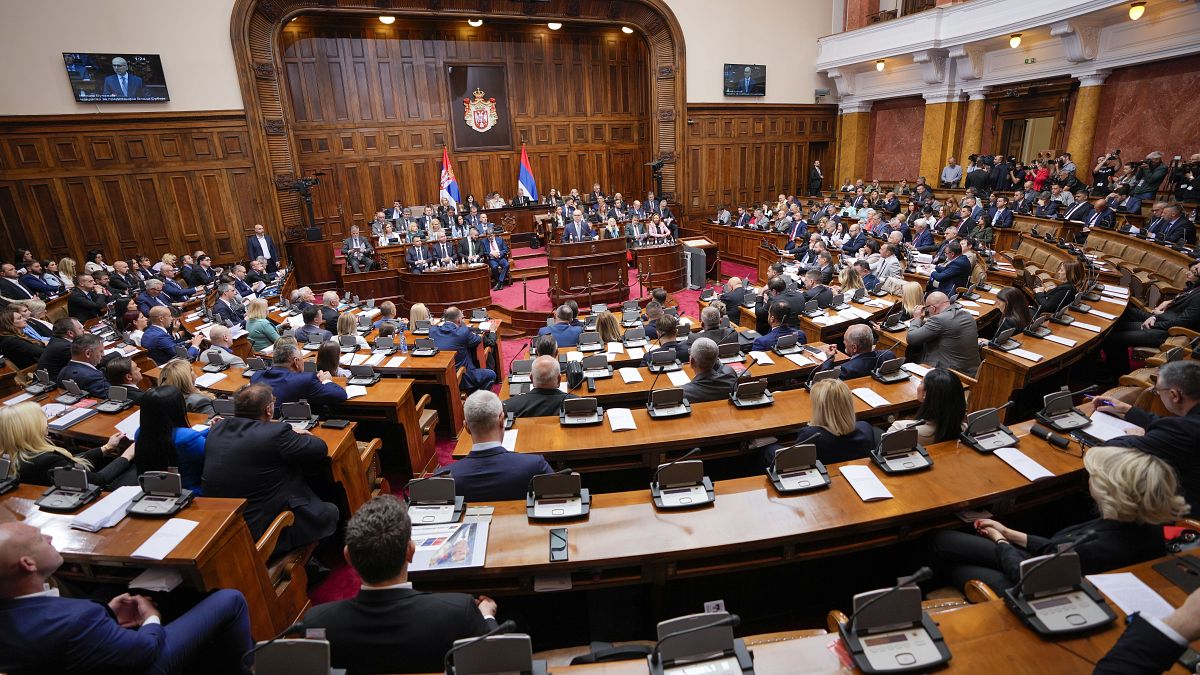
 World1 week ago
World1 week agoSerbian parliamentary minnow pushes for 'Russian law' equivalent
-

 World1 week ago
World1 week agoWho is Ali Bagheri Kani, Iran’s acting foreign minister?
-
Technology1 week ago
Microsoft’s new Windows Copilot Runtime aims to win over AI developers
-

 News1 week ago
News1 week agoBuy-now, pay-later returns and disputes are about to get federal oversight







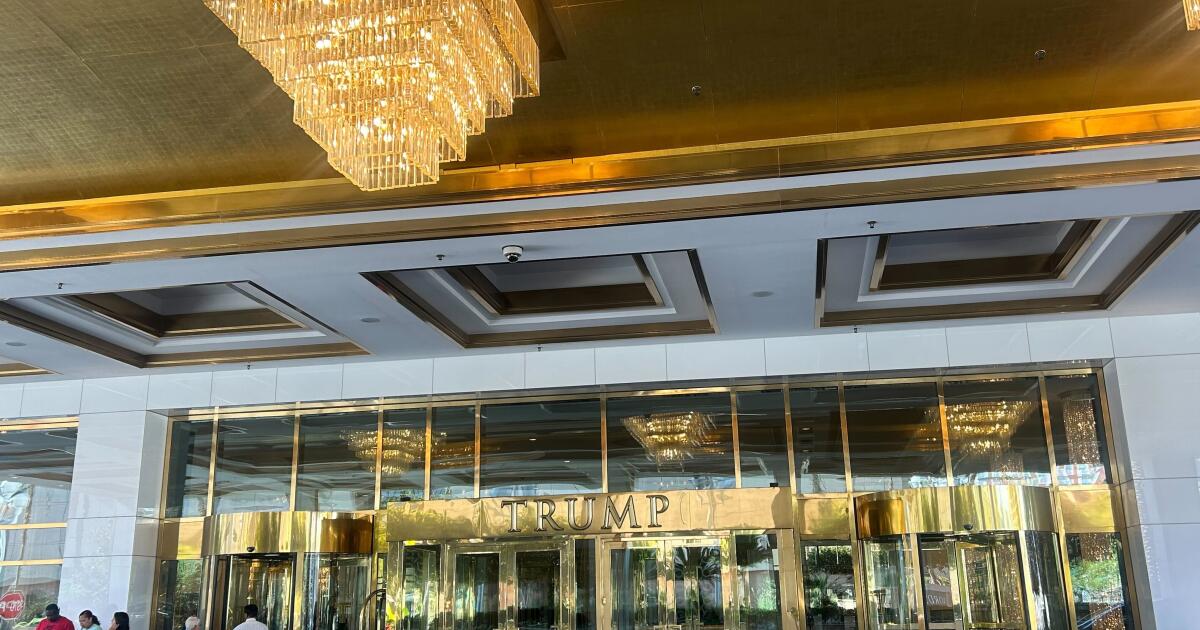









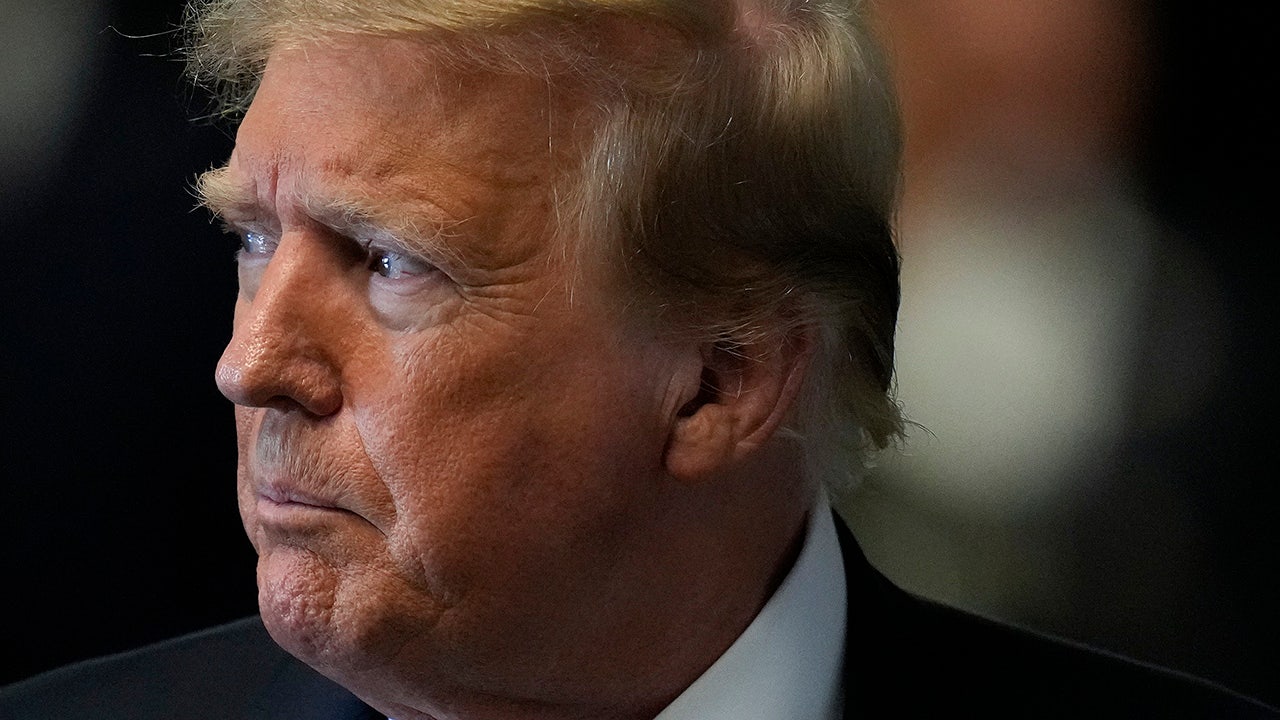


/cdn.vox-cdn.com/uploads/chorus_asset/file/25458338/DSC00620.JPG)